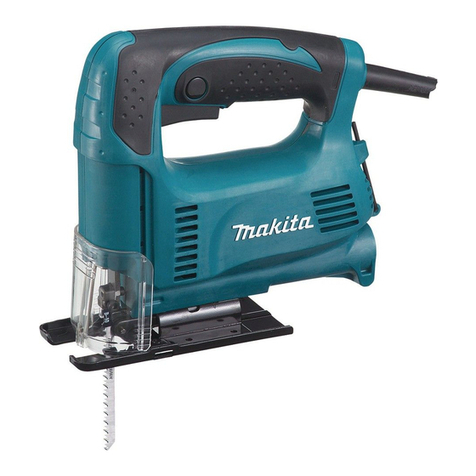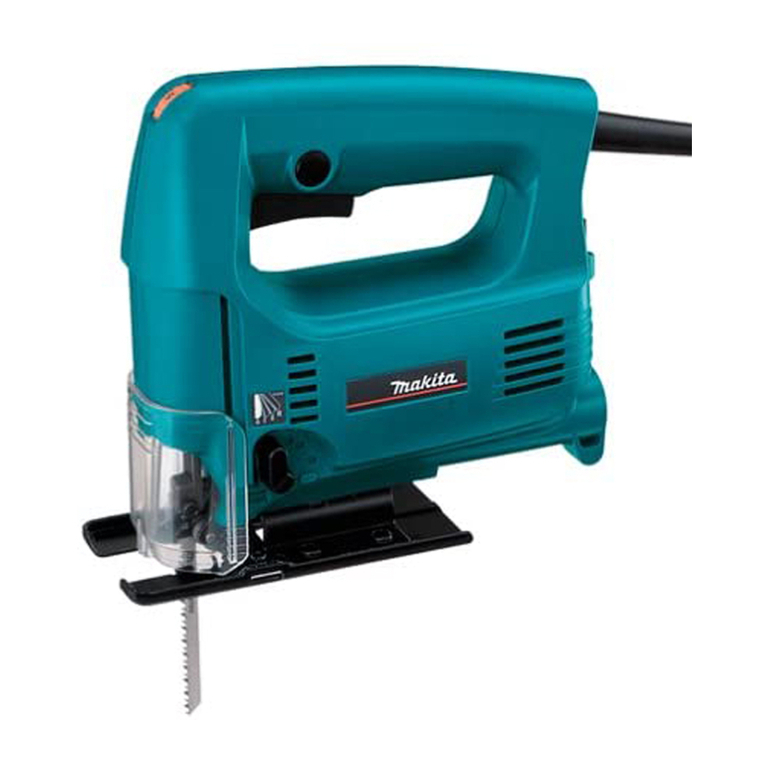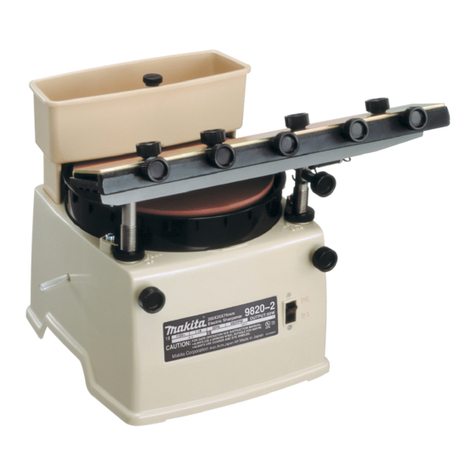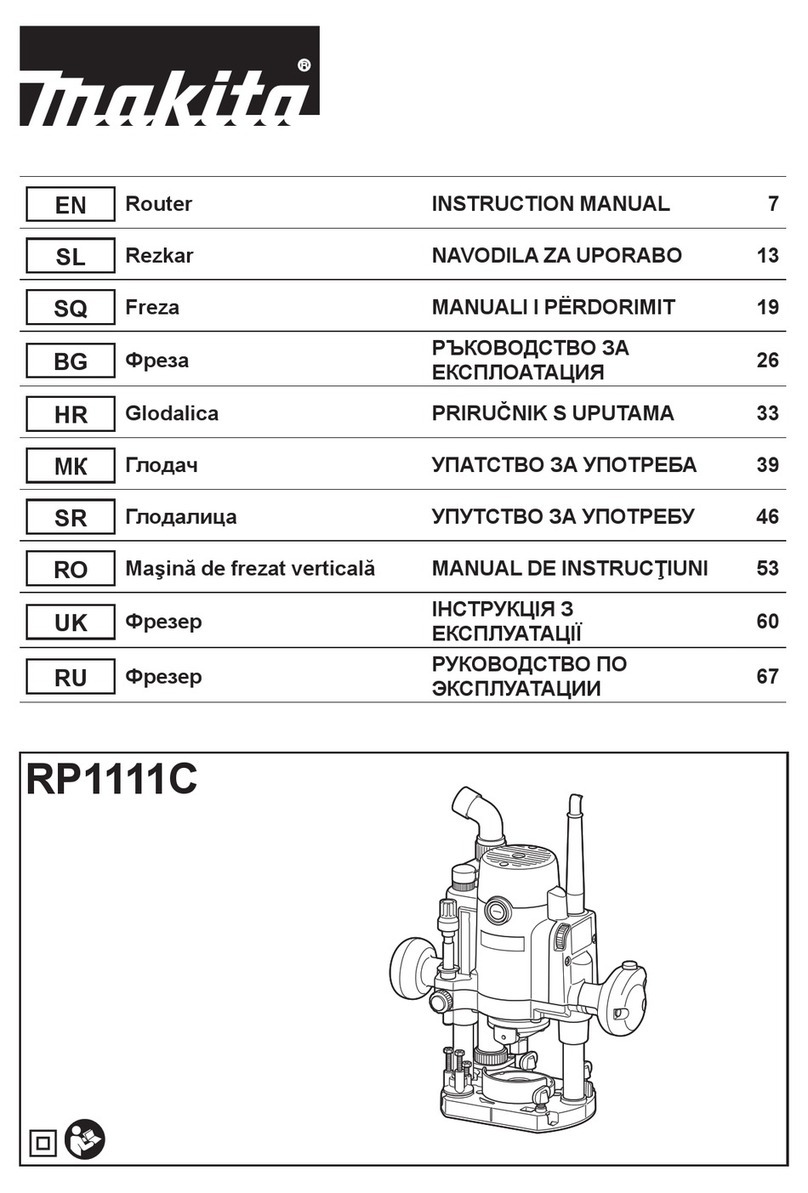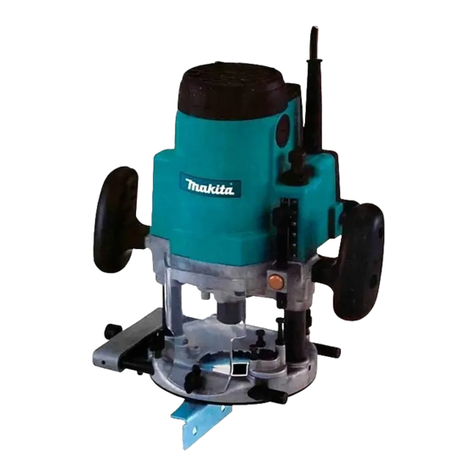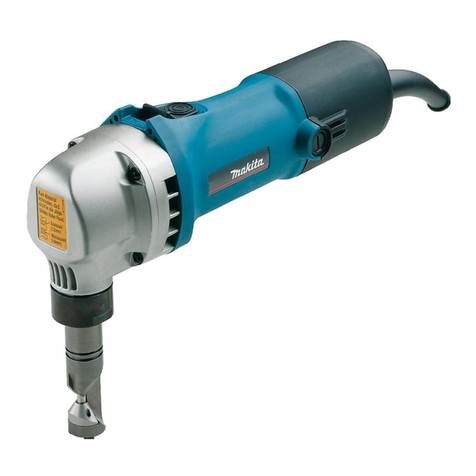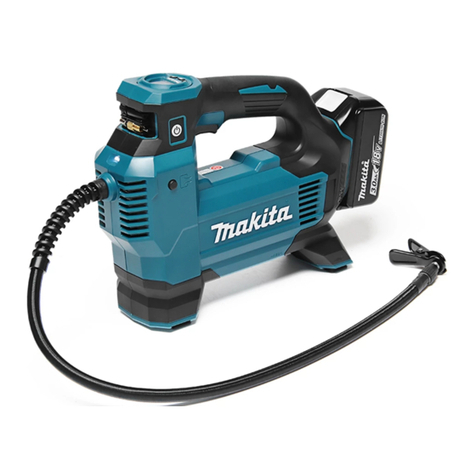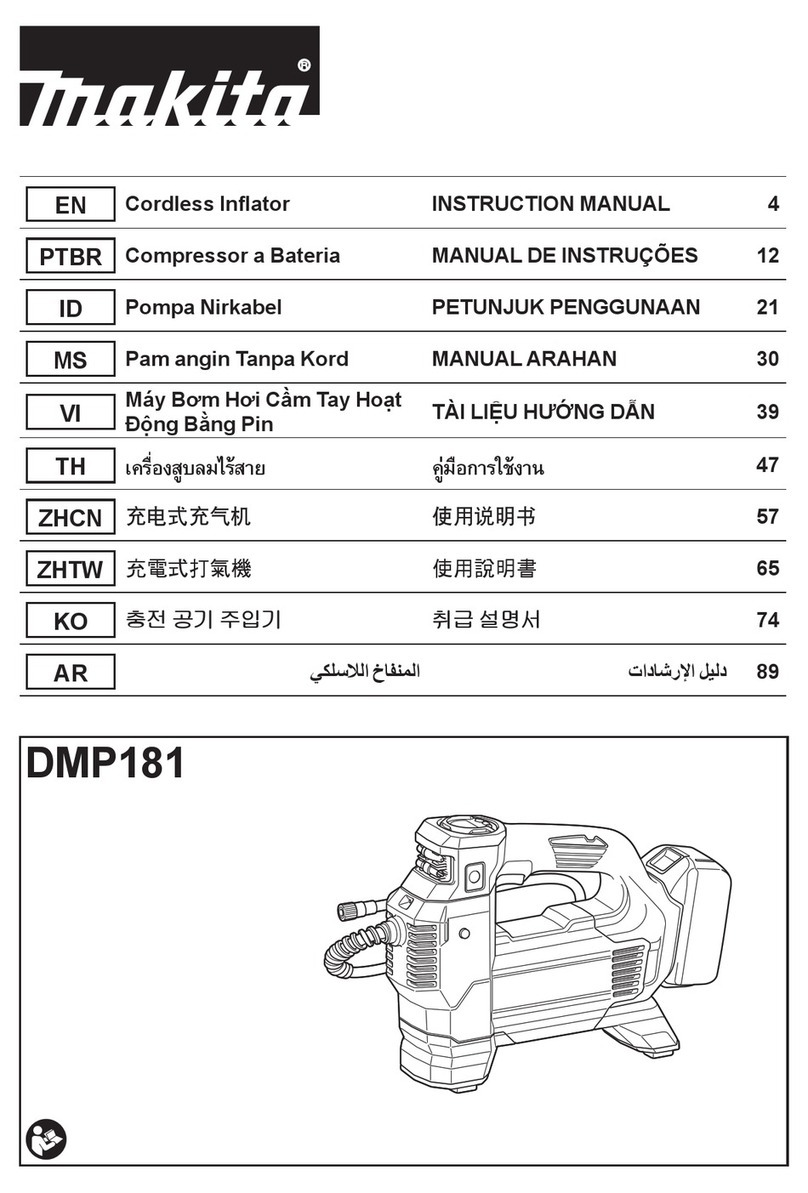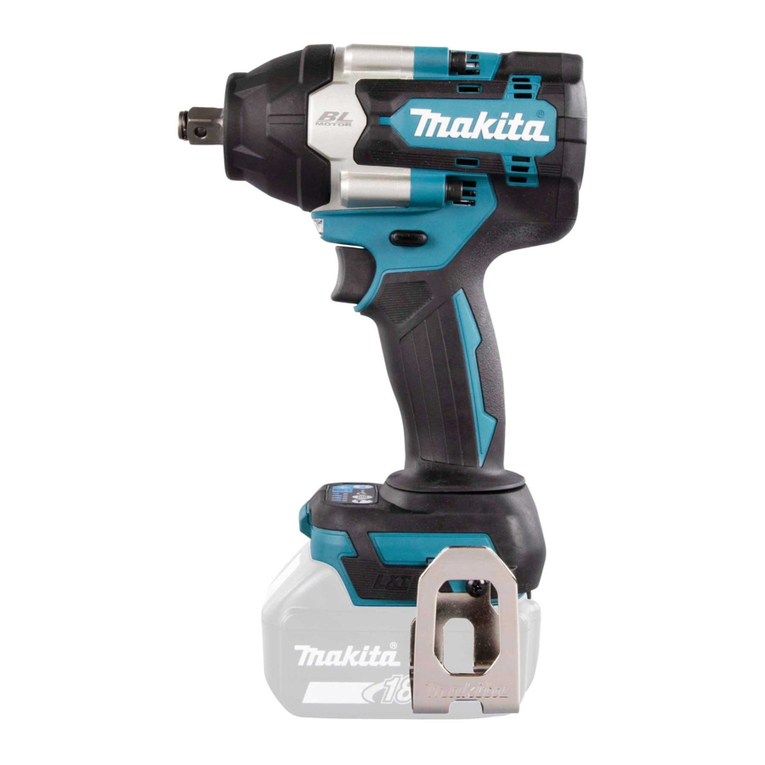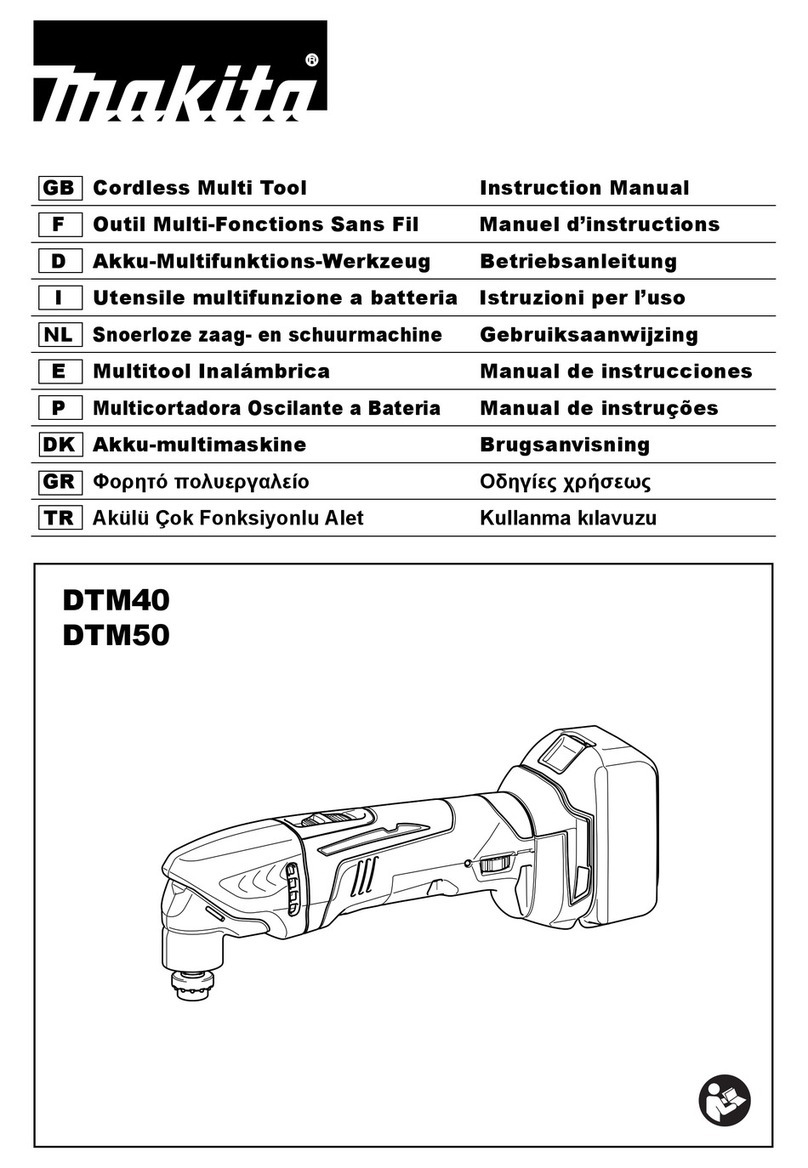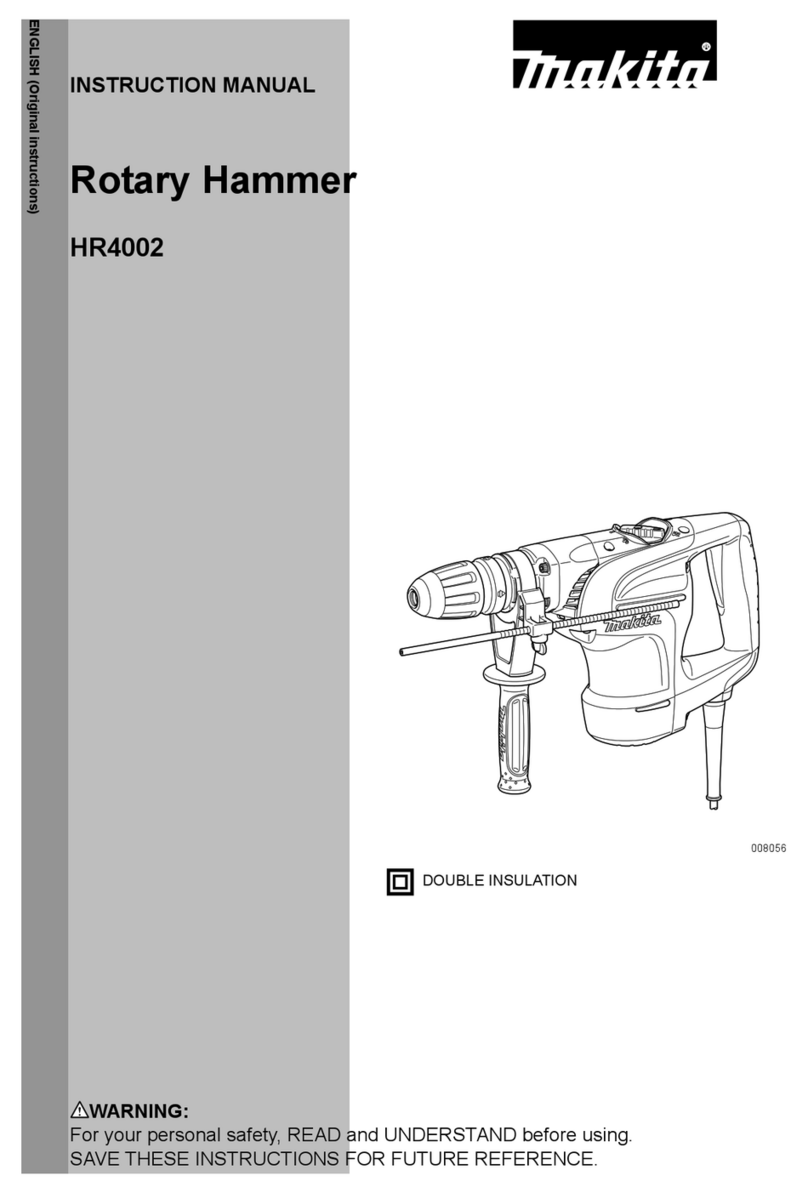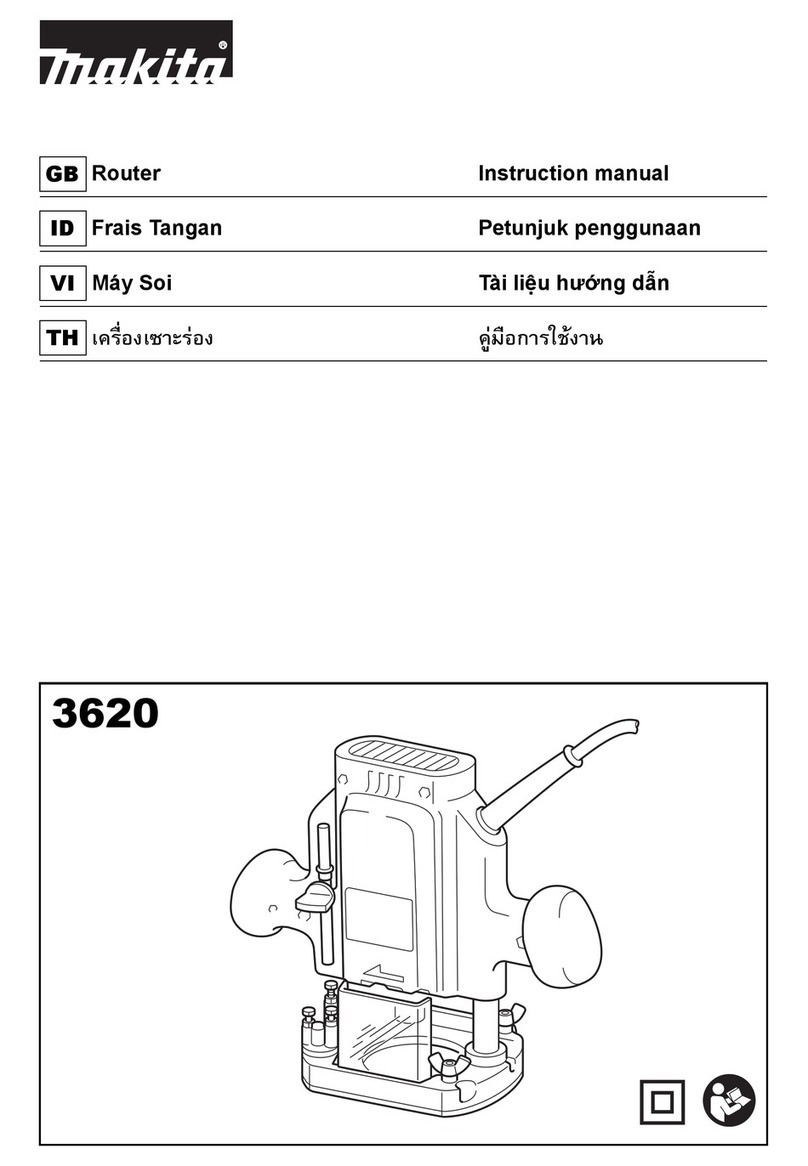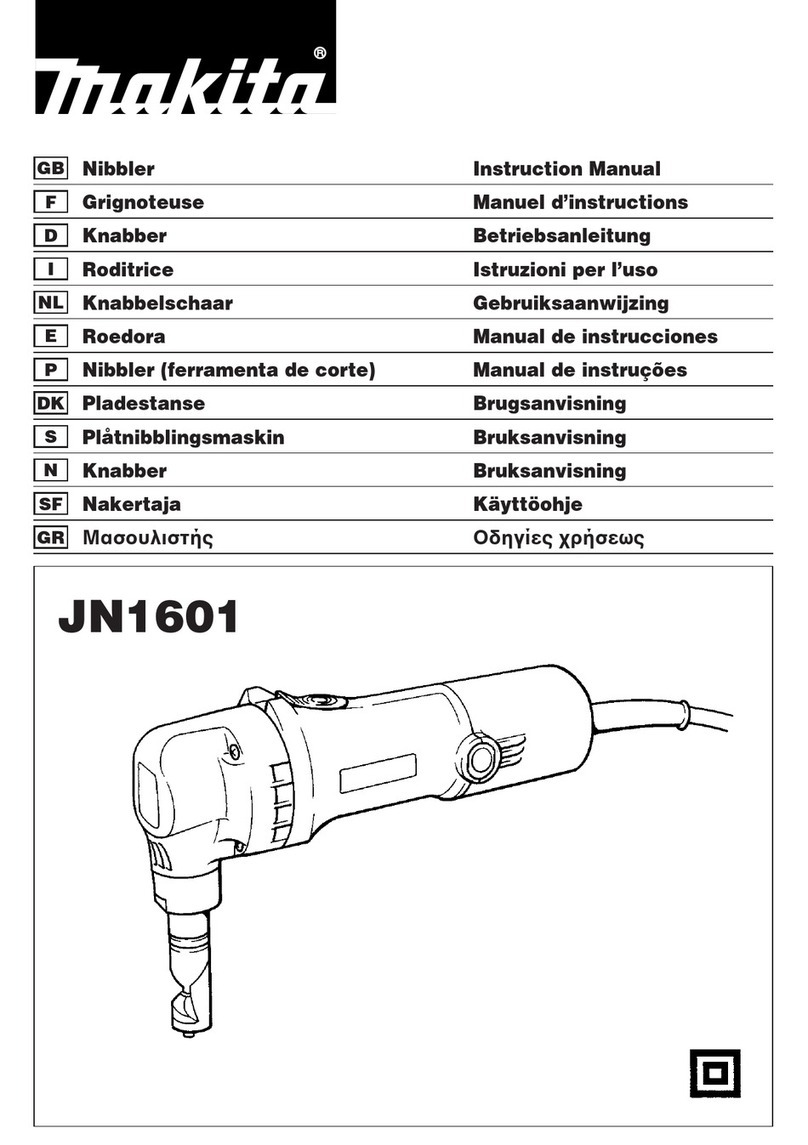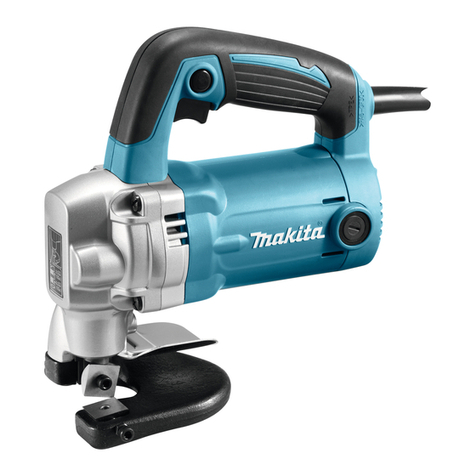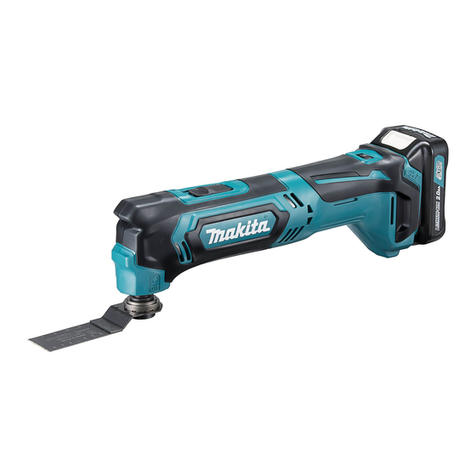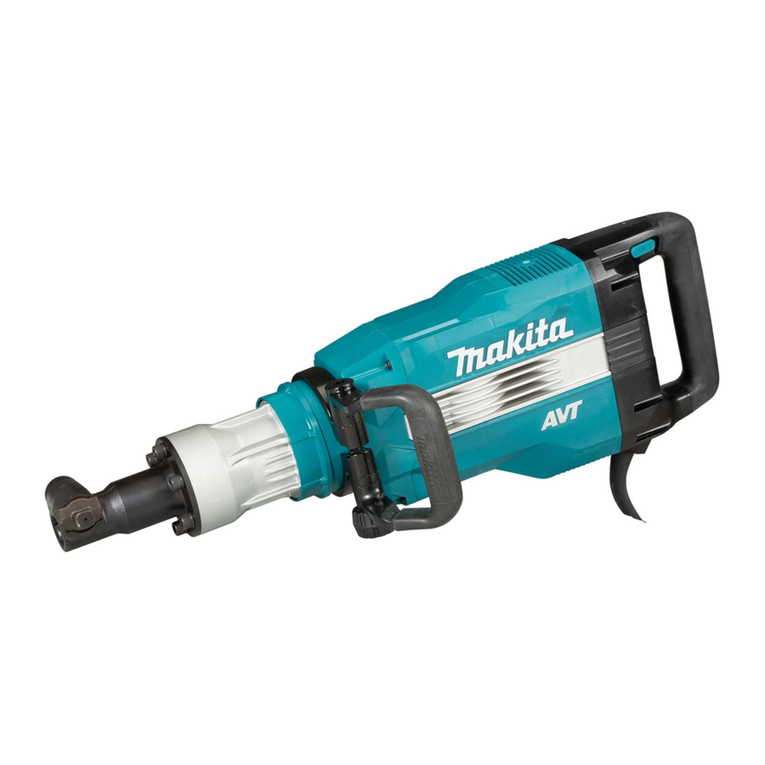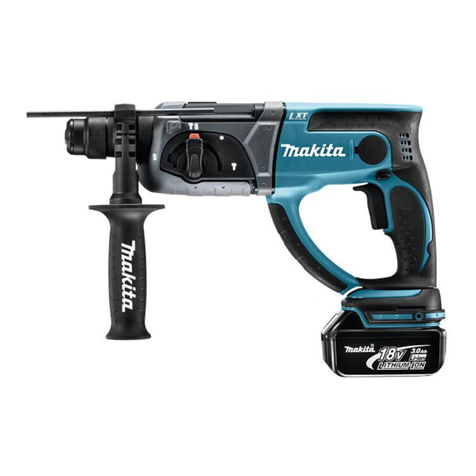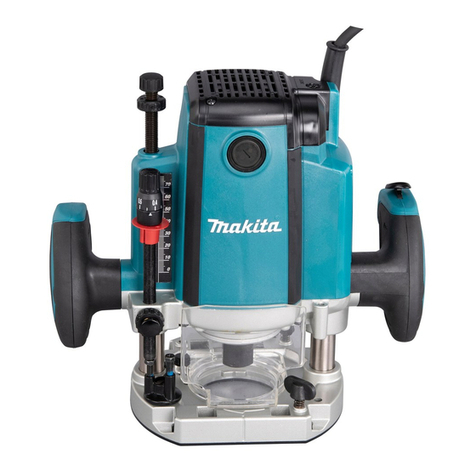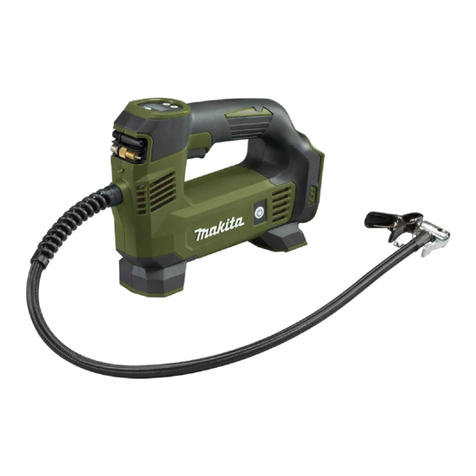
6
Service
23. Have your power tool serviced by a qualified
repair person using only identical replacement
parts. This will ensure that the safety of the power
tool is maintained.
24. Follow instruction for lubricating and changing
accessories.
25. Keep handles dry, clean and free from oil and
grease.
SPECIFIC SAFETY RULES
GEB004-2
DO NOT let comfort or familiarity with product
(gained from repeated use) replace strict adherence
to hammer safety rules. If you use this tool unsafely
or incorrectly, you can suffer serious personal injury.
1. Wear ear protectors. Exposure to noise can cause
hearing loss.
2. Use auxiliary handles supplied with the tool.
Loss of control can cause personal injury.
3. Hold tools by insulated gripping surfaces when
performing an operation where the cutting tool
may contact hidden wiring or its own cord. Con-
tact with a “live”wire will make exposed metal parts
of the tool “live”and shock the operator.
4. Wear a hard hat (safety helmet), safety glasses
and/or face shield. Ordinary eye or sun glasses
are NOT safety glasses. It is also highly recom-
mended that you wear a dust mask and thickly
padded gloves.
5. Be sure the bit is secured in place before opera-
tion.
6. Under normal operation, the tool is designed to
produce vibration. The screws can come loose
easily, causing a breakdown or accident. Check
tightness of screws carefully before operation.
7. In cold weather or when the tool has not been
used for a long time, let the tool warm up for a
while by operating it under no load. This will
loosen up the lubrication. Without proper warm-
up, hammering operation is difficult.
8. Always be sure you have a firm footing.
Be sure no one is below when using the tool in
high locations.
9. Hold the tool firmly with both hands.
10. Keep hands away from moving parts.
11. Do not leave the tool running. Operate the tool
only when hand-held.
12. Do not point the tool at any one in the area when
operating. The bit could fly out and injure some-
one seriously.
13. Do not touch the bit or parts close to the bit
immediately after operation; they may be
extremely hot and could burn your skin.
14. Do not operate the tool at no-load unnecessarily.
15. Some material contains chemicals which may be
toxic. Take caution to prevent dust inhalation
and skin contact. Follow material supplier safety
data.
SAVE THESE INSTRUCTIONS.
WARNING:
MISUSE or failure to follow the safety rules stated in
this instruction manual may cause serious personal
injury.
OPERATING INSTRUCTIONS
Installing or removing bit (Fig. 1 & 2)
Important:
Always be sure that the tool is switched off and
unplugged before installing or removing the bit.
Pull the change ring down all the way and insert the bit
into the tool holder as far as it will go. Release the change
ring and it will return automatically to its original position
to secure the bit. After installing, always make sure that
the bit is securely held in place by trying to pull it out.
To remove the bit, pull the change ring down all the way
and pull the bit out.
Side grip (auxiliary handle) (Fig. 3)
The side grip swings around to either side, allowing easy
handling of the tool in any position. Loosen the side grip
by turning it counterclockwise, swing it to the desired
position and then tighten it by turning clockwise.
Switch action (Fig. 4)
CAUTION:
Before plugging in the tool, always check to see that the
switch trigger actuates properly and returns to the “OFF”
position when released.
To start the tool, simply pull the trigger. Release the trig-
ger to stop. For continuous operation, pull the trigger and
then push in the lock button. To stop the tool from the
locked position, pull the trigger fully, then release it.
Chipping / Scaling / Demolition
Hold the tool firmly with both hands. Turn the tool on and
apply slight pressure on the tool so that the tool will not
bounce around, uncontrolled. Pressing very hard on the
tool will not increase the efficiency.
MAINTENANCE
CAUTION:
Always be sure that the tool is switched off and
unplugged before carrying out any work on the tool.
Replacement of carbon brushes (Fig. 5 & 6)
Whenever carbon brushes must be replaced, they cut out
the tool automatically. When this occurs, loosen the bolts
which secure the rear cover. Remove the rear cover.
Then replace both carbon brushes at the same time. Use
only identical carbon brushes.
Lubrication (Fig. 7 & 8)
This tool requires no hourly or daily lubrication because it
has a grease-packed lubrication system. Lubricate the
tool every time the carbon brushes are replaced.
Run the tool for several minutes to warm it up. Switch off
and unplug the tool. Remove the crank cap using a Mak-
ita lock nut wrench (optional accessory). Rest the tool on
the table with the bit end pointing upwards. This will allow
the old grease to collect inside the crank housing. Wipe
out the old grease inside and replace with a fresh grease
(30 g). Use only Makita genuine grease (optional acces-
sory). Filling with more than the specified amount of
grease (approx. 30 g) can cause faulty hammering action
or tool failure. Fill only with the specified amount of
grease. Reinstall the crank cap and tighten with the lock
nut wrench. Do not tighten the crank cap excessively. It is
made of resin and is subject to breakage.
To maintain product safety and reliability, repairs, mainte-
nance or adjustment should be carried out by a Makita
Authorized Service Centre.


